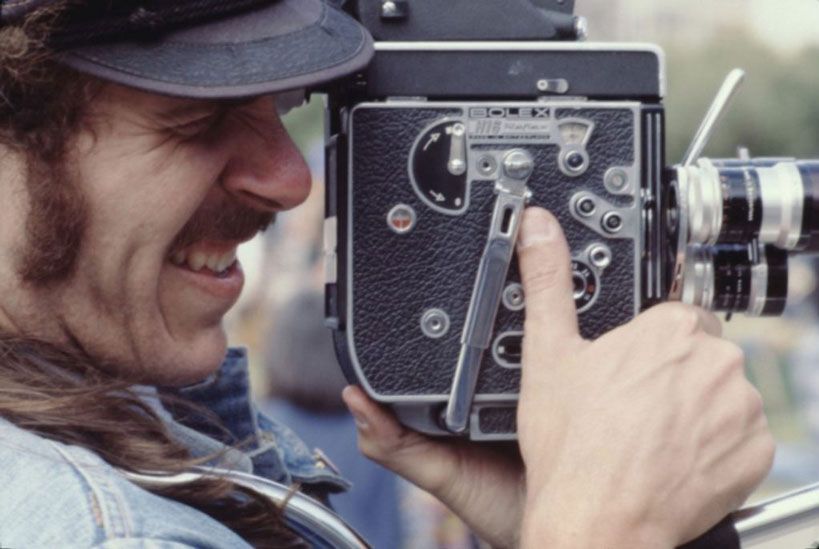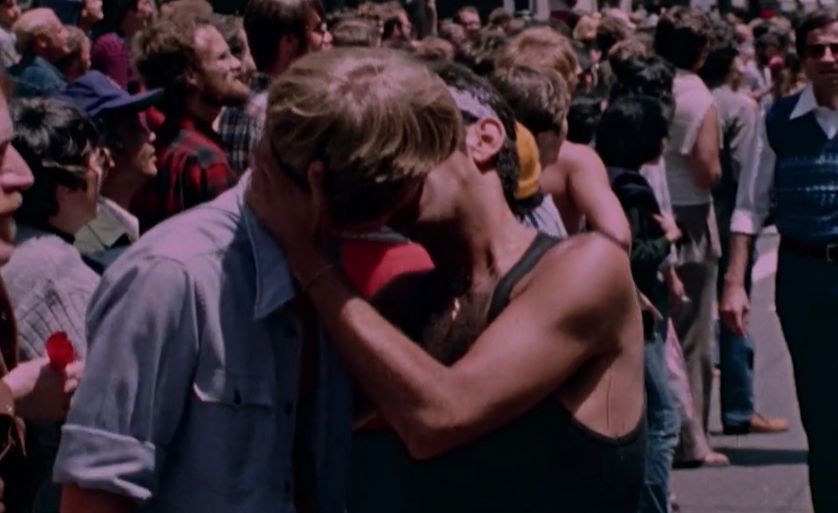Today, Pride parades are commonplace and function as celebratory, rainbow-accented pageantry to openly honour and acknowledge the lives of LGBTQIA+ folks worldwide. However, the first Pride events were not celebratory in nature, but rather heavily socio-political acts of resistance. On June 28, 1970, on the one year anniversary of the Stonewall Uprising led by the late Marsha P. Johnson, the first Pride marches were held in New York, Los Angeles and Chicago. Thousands of LGBTQIA+ people gathered to commemorate Stonewall and demonstrate for LGBTQIA+ rights. As such, Pride began out of the necessity to further queer liberation.
In a similar fashion, today we can honour the Stonewall Uprising and the beginnings of Pride parades through reflecting on the demonstrations of LGBTQIA+ folks who began the movement. Though much of the discourse at the time was heavily censored, through Arthur Bressan Jr.’s recently restored documentary, Gay USA, we are given one of the few authentic insights into the spirit of Pride around the time of its inception. Shot on a single day by 25 different cameramen all across the United States, the film showcases Pride parades across the country and interviews real people. Bressan Jr. remains in constant dialogue with, not just the participants and onlookers featured in the film, but also the spirit of Pride at large in a meaningful and overt way.

The documentary features various people from all demographics and beliefs, to ask the particular questions of what brings them out for Pride, if they identify with queerness, and how they percieve the status of queer liberation in the United States in their lifetime.
Responses varied, many with humility and joy, others hatred. But what is uncanny about the forty-four year old documentary is the way it landscapes its socio-political climate in extremely familiar ways. The arguments against queer liberation presented by interviewees in the film are all too common: protect the children, it goes against the church, do what you want but not in front of me, etc. These answers exhibit just how deep and persistent the roots of homophobia are in our social consciousness if decades later we combat the exact same ideologies.
Likewise, the arguments for queer liberation are eerily similar. In a climate where women’s abortion rights are actively being rescinded and police brutality is at an all-time high, many folks in the documentary make it clear that if one group is oppressed, we all are. The notion that liberation can only be shared, never limited to some, is a thematic concern in the film that tackles even modern understandings of hegemony and oppression. The deliverance of these themes as central to the film is how Bressan Jr. appropriately fulfills the United Nations Sustainable Development Goals of Gender Equality, Reduced Inequalities and Peace, Justice, and Strong Institutions today.
The film also discusses at length largely influential queer political events such as the historical impacts of the genocide of queer individuals in Germany during Third Reich, the 1977 Dade County referendum and the Jean Gillian case. Most people in the film point to these oppressive events as the primary reason they attend Pride.

The spirit of the documentary, Pride and queer liberation is captured eloquently by Black poet Pat Parker in her recital of “For the Straight Folks Who Don’t Mind Gays But Wish They Weren’t So Blatant” when she is interviewed in the film:
“For the straight folks who don't mind gays but wish they weren't so blatant, listen, [...] Have you met the woman who was shocked by two women kissing and in the same breath tells you that she's pregnant, but gays shouldn’t be blatant; or the straight couple who sits next to you at the movie theatre and you can't hear the dialogue 'cause of the sound effects, but gays shouldn't be blatant; and the woman in your office who spends your whole lunch hour talking about her new bikini drawers and how much her husband likes them, but gays shouldn't be blatant […] the fact is, blatant heterosexuals are all over the place: supermarkets, movies, at work, in church, in books, on television, every day and night, every place even in gay bars and they want gay men and women to go hide in the closet. So, to you straight folks I say, sure I’ll go if you go too, but I’m polite so after you.”
The first recorded documentary by and about LGBTQIA+ people is mandatory reading for those who wish to gain a deeper understanding of Pride and queer liberation. Gay USA, with its honesty and authenticity separates itself as searing documentary about hope, resilience and queer freedom and its relevance holds firm even decades after its release.
Read more about the pioneer gay filmmaker Arthur Bressan Jr. at The Talkhouse.
Watch Gay USA and support the restoration of similar queer films through Vinegar Syndrome.
